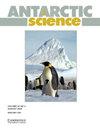低生物量地区土壤环境DNA代谢编码需要方案优化:以南极洲为例
IF 2
4区 地球科学
Q3 ENVIRONMENTAL SCIENCES
引用次数: 1
摘要
摘要环境DNA是监测生物多样性的有力工具。尽管环境DNA调查已在各种环境中成功实施,但方案选择已被证明会影响结果和推断。到目前为止,很少对土壤进行方法比较研究。在这里,我们通过一项比较研究优化了土壤代谢编码的工作流程,包括采样策略(单个和组合样本)、DNA提取(PowerSoil®、NucleoSpin®土壤、PowerSoil™+磷酸盐缓冲液和NucleoSin®土壤+磷酸盐缓冲剂)和文库制备(一步和两步定量聚合酶链式反应方法)的变化。使用部分18S rRNA标记,在Larsemann Hills的一个地点从南极土壤中鉴定出21个门的309个真核生物类群。我们优化的工作流程非常有效,数据质量没有显著降低,大大提高了时间和成本效率。NucleoSpin®土壤+磷酸盐缓冲液是性能最好的提取方法。与其他地区的类似研究相比,我们获得了较低的分类学覆盖率,这可能是因为遗传参考数据库中南极陆地生物的数量很少。我们的发现为最大限度地提高南极洲和其他低生物量环境中土壤代谢编码研究的效率提供了有用的方法学见解。本文章由计算机程序翻译,如有差异,请以英文原文为准。
Soil environmental DNA metabarcoding in low-biomass regions requires protocol optimization: a case study in Antarctica
Abstract Environmental DNA is a powerful tool for monitoring biodiversity. Although environmental DNA surveys have successfully been implemented in various environments, protocol choice has been shown to affect results and inferences. Thus far, few method comparison studies for soil have been undertaken. Here, we optimized the workflow for soil metabarcoding through a comparative study encompassing variation in sampling strategy (individual and combined samples), DNA extraction (PowerSoil®, NucleoSpin® Soil, PowerSoil® + phosphate buffer and NucleoSpin® Soil + phosphate buffer) and library preparation (one-step and two-step quantitative polymerase chain reaction methods). Using a partial 18S rRNA marker, a total of 309 eukaryotic taxa across 21 phyla were identified from Antarctic soil from one site in the Larsemann Hills. Our optimized workflow was effective with no notable reduction in data quality for a considerable increase in time and cost efficiency. The NucleoSpin® Soil + phosphate buffer was the best-performing extraction method. Compared to similar studies in other regions, we obtained low taxonomic coverage, perhaps because of the paucity of Antarctic terrestrial organisms in genetic reference databases. Our findings provide useful methodological insights for maximizing efficiency in soil metabarcoding studies in Antarctica and other low-biomass environments.
求助全文
通过发布文献求助,成功后即可免费获取论文全文。
去求助
来源期刊

Antarctic Science
地学-地球科学综合
CiteScore
3.60
自引率
6.20%
发文量
42
审稿时长
3 months
期刊介绍:
Antarctic Science provides a truly international forum for the broad spread of studies that increasingly characterise scientific research in the Antarctic. Whilst emphasising interdisciplinary work, the journal publishes papers from environmental management to biodiversity, from volcanoes to icebergs, and from oceanography to the upper atmosphere. No other journal covers such a wide range of Antarctic scientific studies. The journal attracts papers from all countries currently undertaking Antarctic research. It publishes both review and data papers with no limits on length, two-page short notes on technical developments and recent discoveries, and book reviews. These, together with an editorial discussing broader aspects of science, provide a rich and varied mixture of items to interest researchers in all areas of science. There are no page charges, or charges for colour, to authors publishing in the Journal. One issue each year is normally devoted to a specific theme or papers from a major meeting.
 求助内容:
求助内容: 应助结果提醒方式:
应助结果提醒方式:


